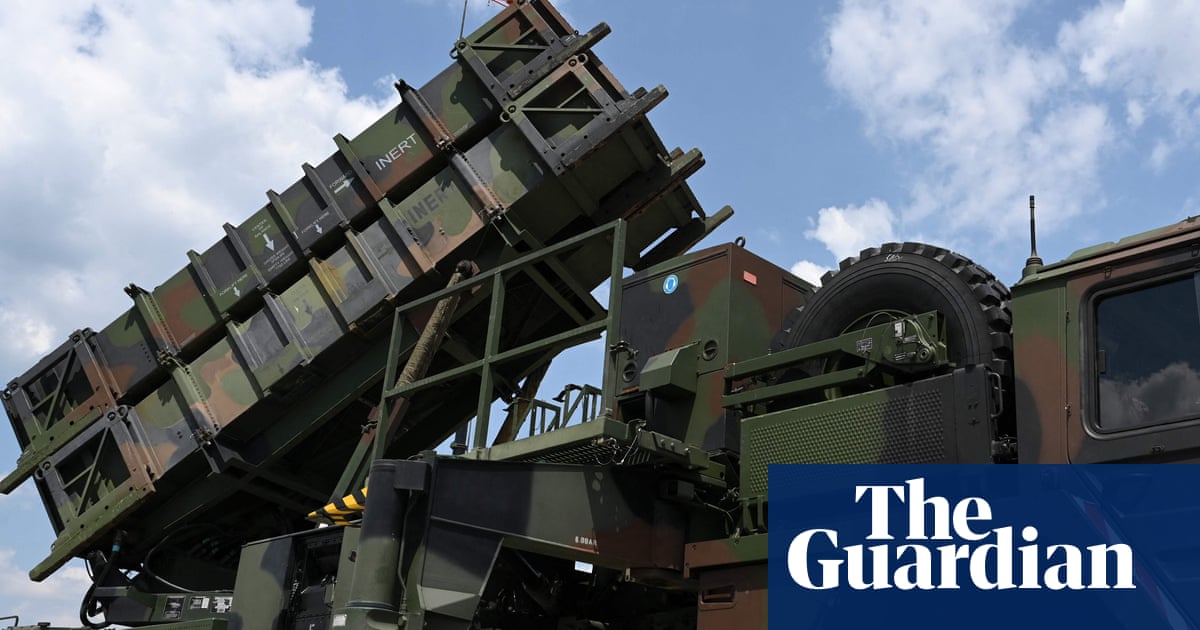U.S. Patriot Missile Depletion and Its Implications
The recent revelation that the United States has only about 25% of the necessary stockpile of Patriot missile interceptors for its military objectives underscores a critical gap in national defense. This alarming depletion has drawn the attention of Pentagon officials, especially in light of the ongoing conflict in Ukraine and heightened military tensions in the Middle East.
Current Stockpile Status
The inventory of Patriot missiles has dwindled significantly due to extensive deployments in the Middle East over the past few months. Balancing defense commitments globally, the Pentagon is reportedly concerned that its diminished stockpile could hinder future military operations. The Deputy Defense Secretary, Stephen Feinberg, has taken the precautionary step of pausing the transfer of munitions to Ukraine for a detailed review of the weapons allocation.
Political Dynamics: Trump Administration Actions
In a surprising turn of events, former President Donald Trump announced intentions to “send some more weapons” to Ukraine, noticeably reversing a previous decision to freeze arms shipments. While the specifics of these arms remain undisclosed, the urgency to support Ukraine amid Russia’s latest aerial onslaught appears to shape Trump’s approach, which also reflects pressure from various political factions.
The Pentagon’s Strategy and Concerns
Internal discussions within the Pentagon reveal that the decision to halt arms transfers was based on a detailed analysis presented by its global munitions tracker. This system, overseen by the Joint Chiefs of Staff and the Defense Security Cooperation Agency, indicates that many essential munitions have been below acceptable levels for years, particularly since aid to Ukraine ramped up under the Biden administration.
As military operations expanded—including increased deployments to counter Iranian missile threats—the urgency for maintaining a robust stockpile of interceptors became more pronounced. Notably, close to 30 Patriot missiles were recently expended in response to tensions with Iran, further exacerbating the inventory crisis.
Strategic Implications for Ukraine
The suspension of U.S. weapon supplies comes at a particularly sensitive time for Ukraine. With Russia intensifying its aerial assaults, Ukraine’s ability to defend itself relies heavily on foreign military aid. The challenges are further complicated by Ukraine’s limited capacity to procure weapons directly from defense contractors, as new orders typically take years to fulfill. The U.S. military, as a priority customer, influences the availability of the same systems Ukraine needs to replenish its defenses.
Debate Over Military Priorities
The operational decisions surrounding the transfer of munitions are not free from controversy. Within the Defense Department, undersecretary Elbridge Colby has faced scrutiny for suggesting a pivot away from supporting Ukraine in favor of preparing for potential conflicts elsewhere, notably with China. Despite this, the freeze on transfers was officially instigated through Feinberg’s office. It was a recognition of the pressing need to stabilize U.S. military capabilities even amidst international commitments.
Recent Developments and Future Actions
Trump’s recent directive to resume certain arms transfers indicates a shift in tone amidst rising frustration with Russian President Vladimir Putin. The White House and Pentagon have confirmed that some shipments will recommence, although the specifics—particularly concerning Patriot missiles—remain uncertain.
The evolving landscape showcases the increasing difficulties the U.S. faces in reconciling its military commitments abroad with maintaining a sufficient defense posture at home. Limited production capacities for various munitions present additional hurdles, with the U.S. producing around 600 Patriot missiles annually, while adversaries like Iran reportedly possess significant missile stockpiles.
In the broader context, the U.S. has previously supplied thousands of Stinger missiles to Ukraine, equivalent to a significant portion of annual production, drawing from a stockpile that was already utilized for U.S. defense needs against emerging threats.
Conclusion: Strategic Balancing Act
The current state of U.S. Patriot missile stockpiles is a poignant illustration of the precarious balance between military readiness and international support commitments. The complexities involved in weapon transfer decisions underscore a critical challenge for U.S. defense policy amid evolving global dynamics. As Ukraine continues to navigate a tense battlefield, the U.S. must find a way to sustain its own defense capabilities while supporting allies in dire need.


